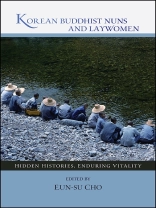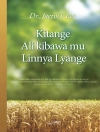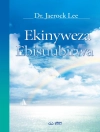Explores the roles of Korean Buddhist nuns and laywomen from the Koryo period to the present.
Uncovering hidden histories, this book focuses on Korean Buddhist nuns and laywomen from the fourth century to the present. Today, South Korea’s Buddhist nuns have a thriving monastic community under their own control, and they are well known as meditation teachers and social service providers. However, little is known of the women who preceded them. Using primary sources to reveal that which has been lost, forgotten, or willfully ignored, this work reveals various figures, milieux, and activities of female adherents, clerical and lay. Contributors consider examples from the early days of Buddhism in Korea during the Three Kingdoms and Unified Silla periods (first millennium CE); the Koryŏ period (982–1392), when Buddhism flourished as the state religion; the Chosŏn period (1392–1910), when Buddhism was actively suppressed by the Neo-Confucian Court; and the contemporary resurgence of female monasticism that began in the latter part of the twentieth century.
สารบัญ
Foreword
Robert E. Buswell
Preface
1. Introduction
Eun-su Cho
2. Female Buddhist Practice in Korea—A Historical Account
Eun-su Cho
3. Male SÆn Masters’ Views on Female Disciples in Later KoryÆ
Young Mi Kim
4. KoryÆ Ladies and the Encouragement of Buddhism in Yuan China
Tonino Puggioni
5. Two Female Masters of Two Eras: Differences and Commonalities in Roles
Heung-sik Heo (translated by John Jorgensen)
6. Marginalized and Silenced: Buddhist Nuns of the ChosÆn Period
John Jorgensen
7. Buddhist Nuns and Alternate Space in Confucian ChosÆn Society
Ji-Young Jung
8. The Establishment of Buddhist Nunneries in Contemporary Korea
Pori Park
Contributors
Index
เกี่ยวกับผู้แต่ง
Eunsu Cho is Professor of Philosophy at Seoul National University of Korea.







![ปกของ Brian Schrag & Julisa Rowe: Community Arts for God's Purposes [Chinese] 貼近神心意的社群藝術 ปกของ Brian Schrag & Julisa Rowe: Community Arts for God's Purposes [Chinese] 貼近神心意的社群藝術](https://static.worldofdigitals.com/thumb_webp/740/9781645083740.webp)




